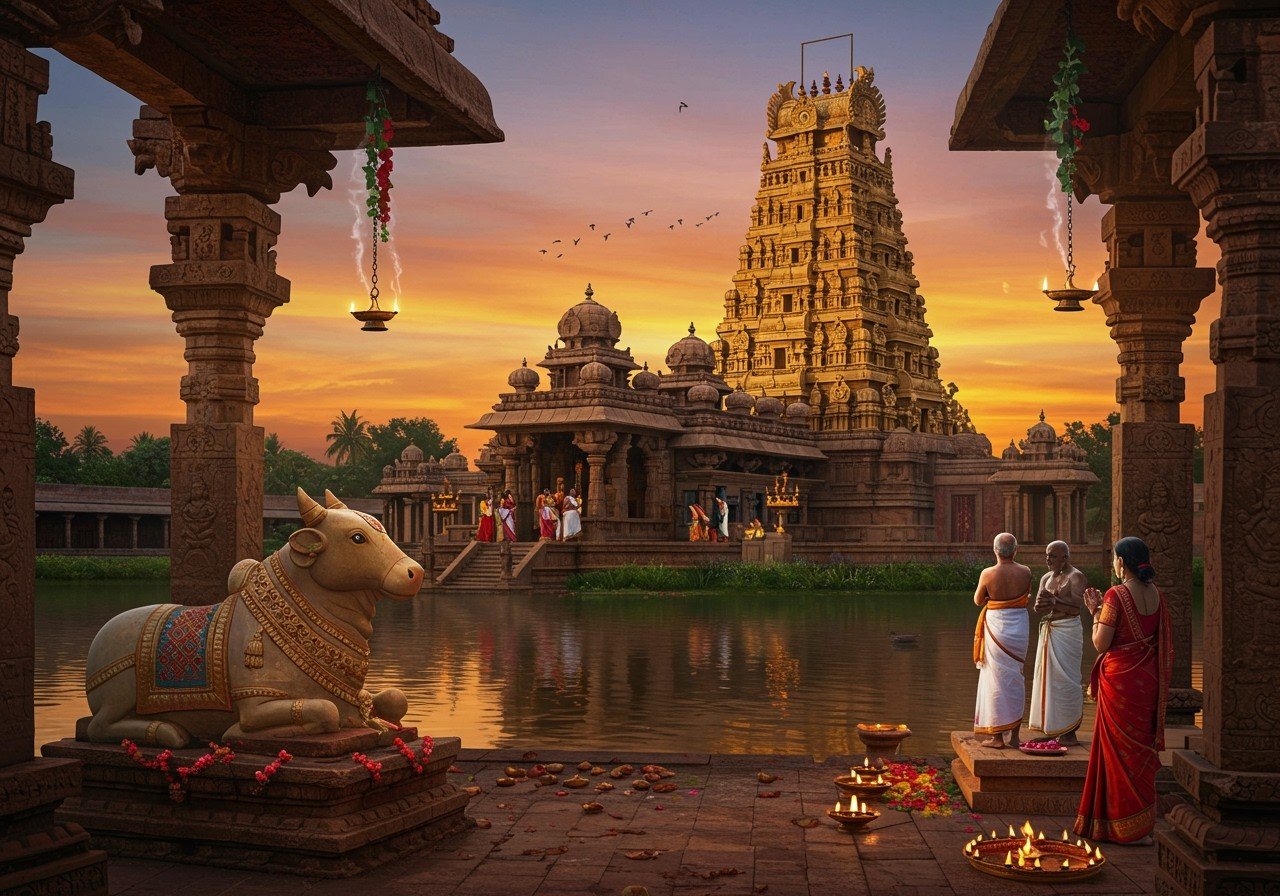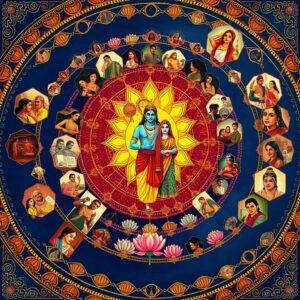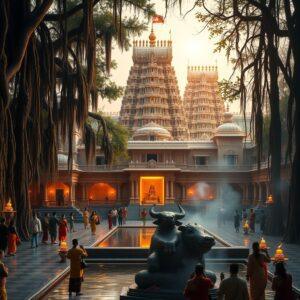
The Mallikarjuna Temple, nestled in the picturesque town of Srisailam, Andhra Pradesh, India, is a place of profound cultural and spiritual importance. This blog post delves into the temple’s rich history, captivating legends, and its significance within Hinduism. More than just a place of worship, the temple stands as a testament to India’s ancient architectural prowess and deep-rooted devotion. Understanding its background allows for a richer appreciation of its significance.
Historical Background
A Historical Gem
The Mallikarjuna Temple holds a revered position as one of the twelve Jyotirlingas, considered the holiest shrines of Lord Shiva in Hinduism. Historical records suggest its origins trace back over a thousand years. With significant contributions from various dynasties, including the Chalukyas, Kakatiyas, and Vijayanagara Empire, the temple’s architecture showcases the distinctive Dravidian style, marked by towering Gopurams (gateway towers). Since ancient times, the site has served as a prominent center of Shaivism, attracting pilgrims from across India. The temple complex encompasses various smaller shrines and a sacred pond.
Legends and Myths
Mystical Narratives
Legends abound, weaving a mystical aura around the Mallikarjuna Temple. One tale attributes the temple’s construction to Lord Rama and his brother Lakshmana during their quest to find Sita. Another narrative suggests that Lord Shiva and Goddess Parvati manifested here as Mallikarjuna and Bhramaramba to bestow blessings upon their devotees. The temple is also linked to the story of Arjuna, one of the Pandavas from the Mahabharata, who is said to have performed penance at this sacred site. These narratives imbue the temple with a profound sense of reverence, solidifying its status as a cherished pilgrimage destination. The story of Lord Shiva appearing as a Jyotirlinga to absolve the sins of his devotees holds particular significance.
Architectural Marvels
Dravidian Splendor
The temple’s architecture stands as a prime example of the Dravidian style, with intricate carvings and sculptures adorning its walls. The main sanctum houses the Jyotirlinga of Lord Mallikarjuna, while the temple’s design thoughtfully accommodates the flow of thousands of pilgrims. Within the complex, the shrine of Goddess Bhramaramba, recognized as one of the eighteen Shakti Peethas, also holds a place of reverence. The Vimana (tower above the sanctum) and the Mukhamandapa (front hall) are embellished with rich carvings depicting various deities and scenes from mythology. The temple’s pillars are renowned for their exquisite carvings of dancers, musicians, and mythical creatures.
Rituals and Festivals
Sacred Practices and Grand Celebrations
The temple adheres to a meticulous schedule of daily rituals, including the Abhishekam (ritual bathing of the deity), Alankaram (decoration), and Aarti (worship with light). Major festivals celebrated at the temple include Maha Shivaratri, drawing vast numbers of devotees. Other significant events like Navaratri and Brahmotsavam are marked by elaborate rituals and captivating cultural performances. The temple priests, known as Archakas, play a vital role in conducting these sacred rituals, which devotees believe bring spiritual merit and blessings. Learn more about Maha Shivaratri on poojn.in.
Cultural Significance
A Tapestry of Art and Tradition
Beyond its religious significance, the Mallikarjuna Temple serves as a vibrant cultural hub. Over the centuries, it has inspired diverse forms of art, literature, and music. Classical dance forms like Kuchipudi and Bharatanatyam often depict the temple’s legends and rituals. Inscriptions within the temple provide valuable insights into the socio-cultural history of the region. The annual Brahmotsavam festival, a spectacle of processions, music, and dance, showcases the temple’s vibrant cultural tapestry. The temple also plays a vital role in preserving traditional crafts and rituals. Explore more about traditional festivals on poojn.in.
Visiting the Temple
Plan Your Pilgrimage
The temple is easily accessible by road, with good connectivity from major cities like Hyderabad and Vijayawada. Accommodation options cater to various budgets, ranging from lodges to guest houses managed by the temple administration. Visitors are advised to respect the temple’s dress code and guidelines to ensure a respectful and fulfilling experience. The cooler months, from October to March, offer the most pleasant time to visit. Guided tours are available for those seeking a deeper understanding of the temple’s history and architecture. You can find puja items for your visit at poojn.in.
Poojn.in: Your Spiritual Companion
Enhance your spiritual journey with poojn.in. As India’s leading provider of cultural and religious goods, poojn.in offers a wide selection of high-quality puja items, including diyas, incense, and more, to enrich your worship experience. Whether preparing for a temple visit or creating a sacred space at home, poojn.in has everything you need. Visit poojn.in today and discover a world of spiritual offerings.


